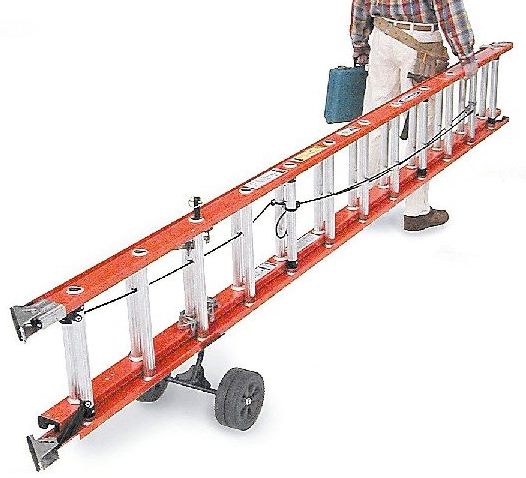 |
 |
| Temporary wheel: Ladder dolly | Wheels too small, especially for rough floor |
Background
The wheel is one of the core techniques that humans have used for tens of thousands of years to reduce exertion. Even today, we find new uses.
There are two common considerations regarding wheels in the workplace. The first is a shortcoming: wheels are frequently too small or of poor quality for their purpose. The second is positive: there are many more potential applications for wheels, in particular, wheels added to stationary equipment to make them more portable
Objectives
Anything that reduces exertion in transporting materials makes it more ergonomic, all else being equal.
Ideas and Options
Wheel diameter
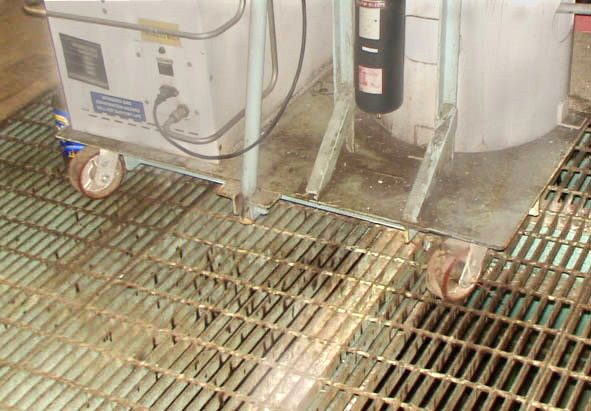 |
 |
| Small wheels on rough grating | Remarkably tiny wheel |
A common problem with carts is that the wheels are too small, which makes the carts less efficient and harder to push. Some wheels used in manufacturing are astonishingly small, given their purpose.
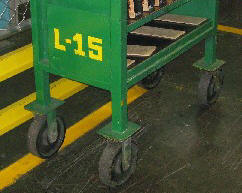 |
 |
| Good sized wheels for heavy cart | Very large wheels for emergency equipment |
Industrial carts often need wheels of at least 10 in. diameter. Usually, larger is better. Manual emergency equipment (above right) is often designed with very large wheels (note also the location of the wheel axle and the comments in the section on axles below).
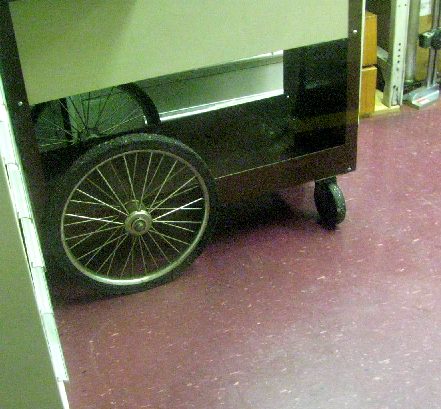 |
 |
| Large back wheels in combination with small front casters (mail room cart) | Large back wheels are common on lawnmowers to make pushing easier on rough ground |
Sometimes, using only one set of large wheels can make a difference. Like many ergonomics solutions, ideas for improvement surround us in everyday life.
For large wheels of this type, search for “spoked wheels.”
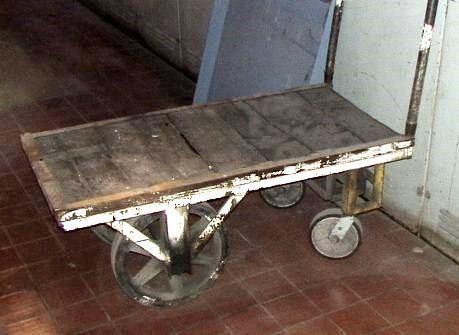 |
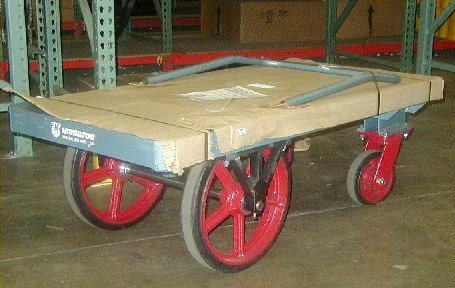 |
| Very old carts often have larger wheels | Fortunately, still available today (platform truck,www.hamiltoncaster.com) |
Many old carts (i.e. 19th century appearance, above left) have very large wheels. Undoubtedly, everyone understood the importance of large wheels in the days before widespread use of fork lift trucks and heavy items had to be moved by hand. Fortunately, some of these “old” and sturdy designs are still available today.
Note that the larger wheels also provide an untended benefit of raising the cart surface. For applications where these types of carts are normally used, it creates a better height for manual loading and unloading. (See height.)
Axles
Note in the photos above that the larger wheels have axles that span the width of the cart, in contrast to the caster-style wheels. Among other advantages, axles enable the use of large wheels in situations that would not be possible with caster wheels. The axles can be mounted in different ways to put the loads at different heights. For example, in the previous photo of emergency equipment, the axle is halfway up the height of the tanks. Huge wheels like these could not otherwise be used.
 |
| Axles enable large wheels floor-level loads |
Hand trucks with a load surface at floor level normally have axles mounted to keep the load surface at floor level, which allows the tanks to be rolled on and off without needing to lift. This concept can be applied in other situations where large wheels are needed.
Quality and material
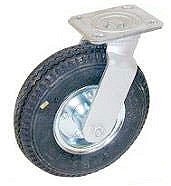 |
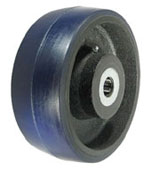 |
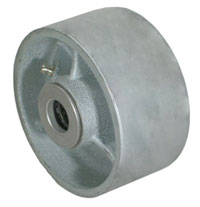 |
| Pneumatic | Polyurethane | Cast iron |
The quality and type of material that the wheel is made of can make a difference. Examples are shown above (from www.castercity.com which has an excellent guide to the types and uses of different casters and wheels). Choice depends upon use and the type of flooring.
Good bearings in the wheels can also help the usability of a cart.
Terminology note — Casters: People tend to use “wheel” and “caster” interchangeably when talking about carts. Technically, the “caster” is the hardware frame that attaches the wheel to the cart. A “wheel” is only the round roller.
Swivel vs. fixed
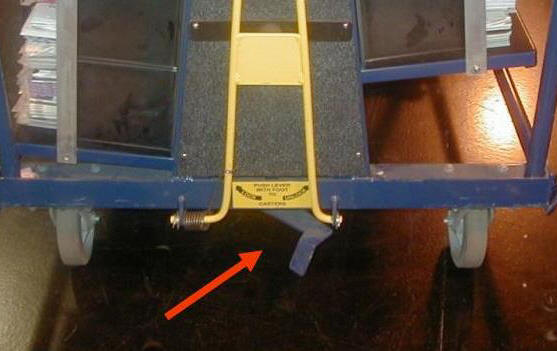 |
 |
| USPS ErgoCart | Hospital gurney |
Normally, fixed wheels are used for traveling a distance and swivel wheels for maneuverability. By far the most common combination is swivel front wheels and fixed rear wheels, like grocery shopping carts. However, where tight maneuvering is required (and distance moving not required), using swivels on all four wheels can be useful.
Additionally, it is possible to incorporate locking systems that enable changing back and forth quickly between fixed and swivel. The ErgoCarts used by the U.S. Postal Service have this feature (above left, note lever at center base of cart). Hospital patient handling equipment often incorporate this design as well, allowing rapid change between fixed and swivel.
Various styles of switchable wheels are available from industrial supply houses and caster suppliers. (See also air casters for an alternative technology.)
Tracks and runways
 |
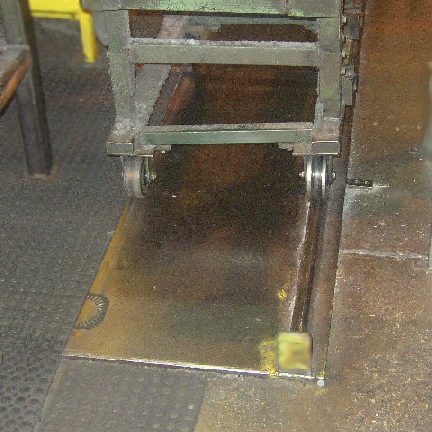 |
| Tracks | Smooth plate plus single track |
Especially heavy loads can be placed on tracks, which reduces the force needed to push the load. In both of the photos above, the length of the tracks was rather short, about 20 ft., just sufficient to move the cart from one operation to the next. In the photo at right, a plate is used to cover the rough floor. The track keeps the cart on the plate in addition to reducing force.
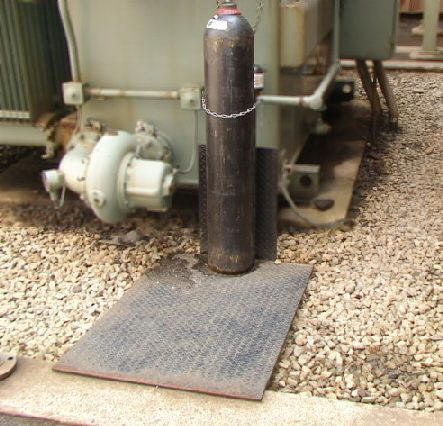 |
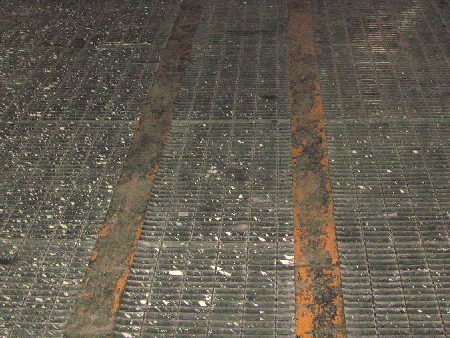 |
| Steel plate over gravel for wheeling the cylinder | Long plates over grating |
Temporary plates can be used in many situations where heavy loads need to be moved over rough surfaces. Permanent plates can also be designed into rough surfaces.
Brakes and floor locks
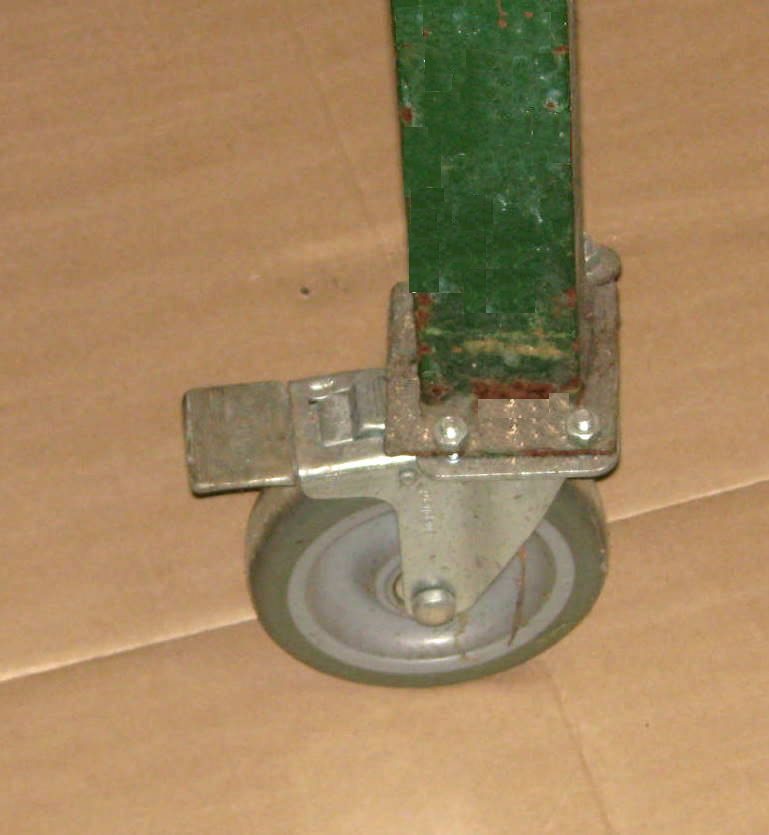 |
| Caster brake |
Normally, a brake of some type is needed for wheeled equipment. Casters may be purchased with or without brakes.
 |
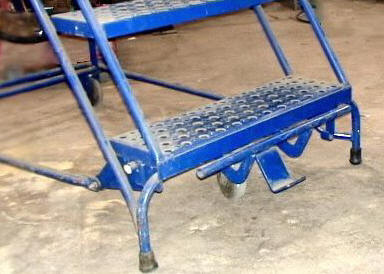 |
| Floor lock on heavy die cart | Floor lock on wheeled step platform |
Floor locks provide a different option, often helpful in retrofitting rolling equipment. Chocks can also be used.
Underused applications
Wheels for flexibility
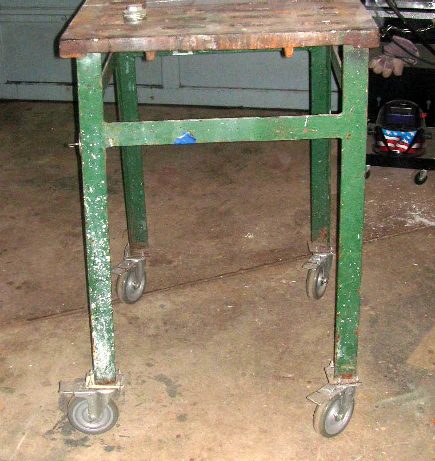 |
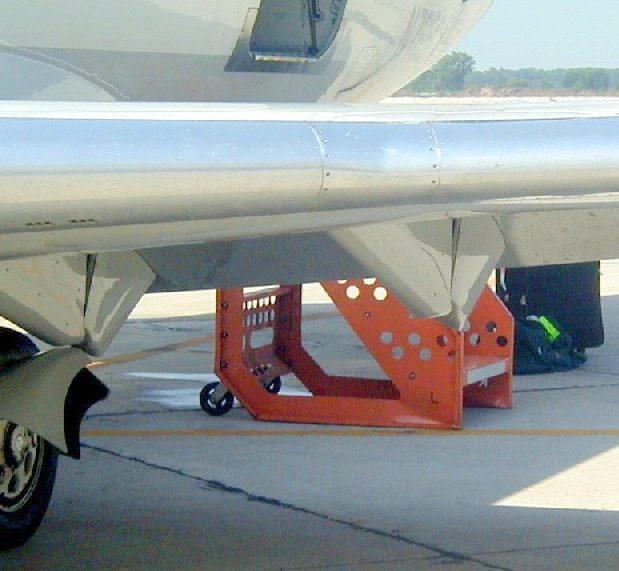 |
| Casters on welding table | Wheels on aircraft steps |
Wheels can easily be retrofitted onto equipment that is normally fixed. The increased mobility can provide a more flexible work area, plus it enables items to be stored out of the way, yet easily retrievable.
The aircraft steps in the photo above right must still be lifted, but the wheels dramatically reduce the force required. The concept is inexpensive and can be applied in countless situations in the workplace.
Temporary wheels
 |
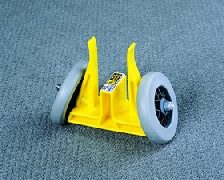 |
| Crank up wheel on portable workbench | Table wheel, temporarily put under a table to move |
Temporary wheels can be added to many types of equipment to facilitate movement. The example of the ladder dolly at the top of the page provides a good example. Despite our everyday knowledge of this basic technology, there are yet additional applications where wheels could be used.
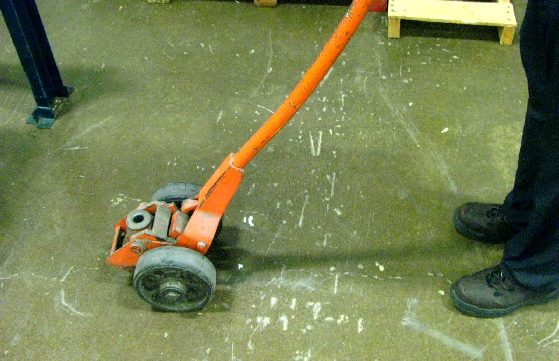 |
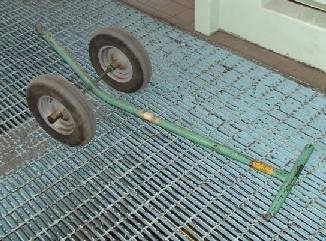 |
| Lever dolly | Lever dolly with large wheels |
A lever dolly is an extra set of wheels that can be placed under an object to help move. This type of device is very old and is often referred to by different names, including “Johnson bar,” “J-bar,” and “pry truck”.
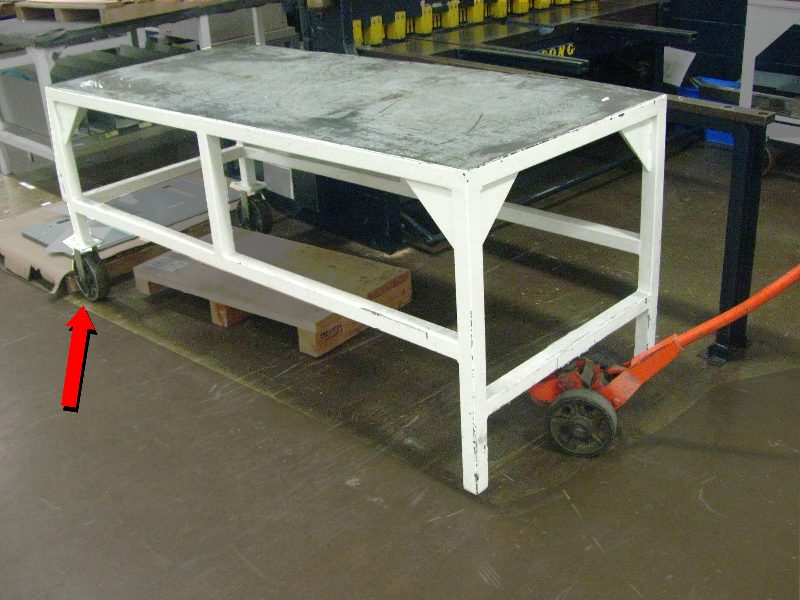 |
| Table with permanent wheels at one end (arrow) designed for use with lever dolly |
Commonly, objects that are moved with a lever dolly are designed for this purpose by adding a set of permanent wheels.
*
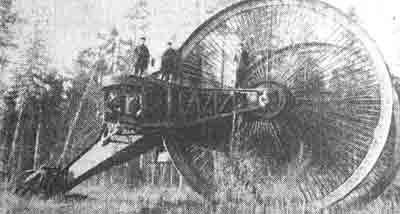 |
| Wheels for World War I German cannon |
The wheel is good ergonomics — it’s proven technology.
